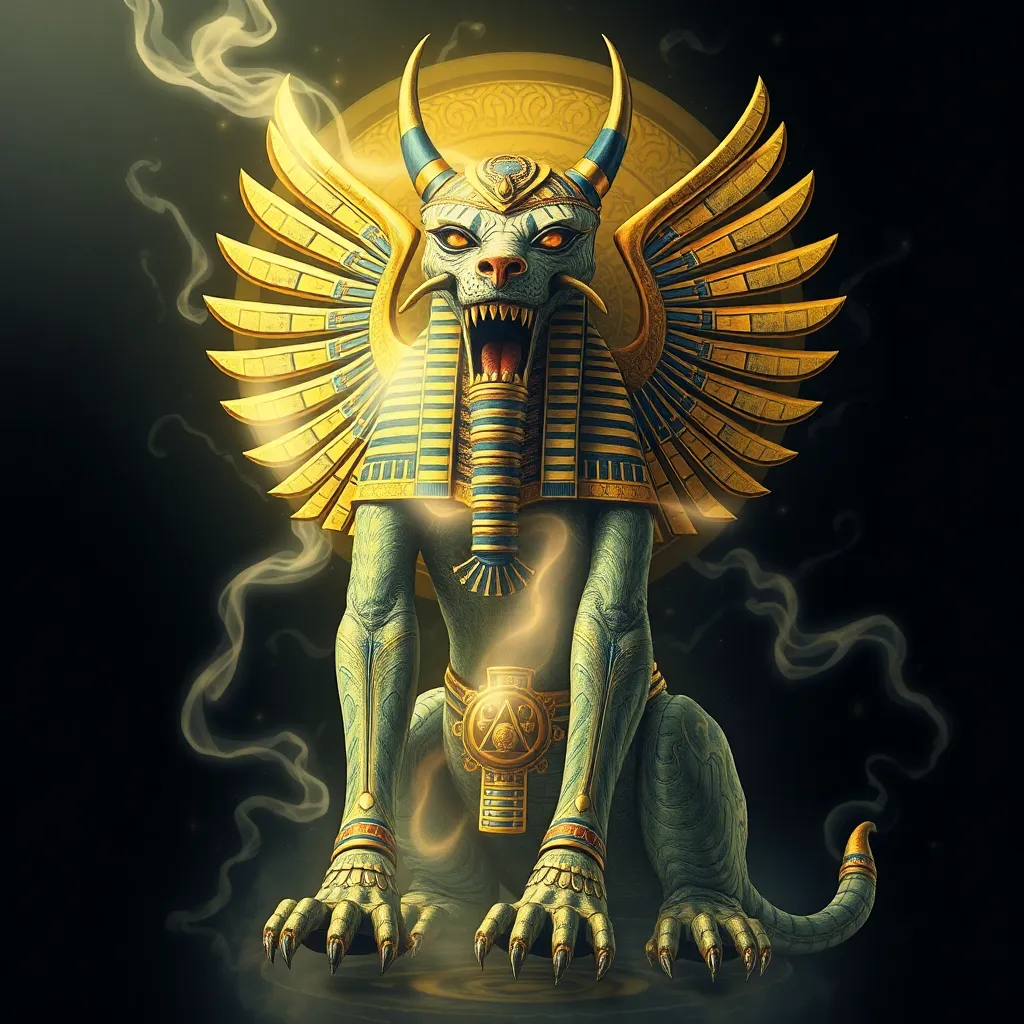Ammit: The Soul Eater in Egyptian Religion
I. Introduction to Ammit
Ammit, often referred to as the “Soul Eater,” occupies a unique and significant place in ancient Egyptian mythology. As a fearsome creature, Ammit served as a crucial figure in the journey of the soul after death, particularly during the judgment process. Her role emphasizes the importance of moral integrity and the consequences of one’s actions in life, making her an essential character in the context of the afterlife.
In ancient Egyptian belief, the afterlife was not merely a continuation of life on Earth but a complex journey filled with trials and tribulations. Ammit’s presence in this journey underscores the importance of ethical behavior and the eternal consequences of one’s choices.
II. Mythological Origins of Ammit
The origins of Ammit can be traced back to various ancient texts, including the “Book of the Dead,” which outlines the rituals and beliefs surrounding death and judgment in Egyptian culture. Ammit is often depicted as a monstrous being, combining elements of several animals—specifically the head of a crocodile, the body of a lion, and the hindquarters of a hippopotamus.
Her creation reflects the Egyptian view of morality and justice, as she embodies the ferocity needed to punish those deemed unworthy. Ammit is closely associated with other deities in the Egyptian pantheon, particularly Ma’at, the goddess of truth and justice, as well as Osiris, the god of the afterlife. Together, these deities shape the moral framework within which souls are judged.
III. Physical Description of Ammit
Ammit’s hybrid form is rich in symbolism, representing the various aspects of nature and the primal instincts associated with judgment and punishment. Each part of her body holds significance:
- Crocodile Head: Symbolizes ferocity and the ability to devour, reflecting her role as a soul eater.
- Lion Body: Represents strength and power, indicating her dominance in the judgment process.
- Hippopotamus Hindquarters: Embodies the dual nature of danger and protection, tying her to the waters of the Nile, which were both life-giving and treacherous.
This hybrid imagery creates a sense of fear, reinforcing the idea that Ammit is a formidable force that no soul can escape if deemed unworthy.
IV. Role in the Judgment of Souls
Ammit’s most prominent role is during the Weighing of the Heart ceremony, a central event in the afterlife beliefs of ancient Egyptians. This ceremony was conducted by the god Anubis, who weighed the heart of the deceased against the feather of Ma’at. The heart represented the individual’s soul and actions during their lifetime, while the feather symbolized truth and justice.
If the heart was found to be lighter than the feather, the soul was granted passage to the afterlife, where it could live in peace. However, if the heart was heavier, indicating a life filled with wrongdoing, Ammit awaited to devour the unworthy soul. Thus, Ammit functioned as a devourer of the souls of the sinful, serving as a grim reminder of the consequences of a life lived poorly.
V. Ammit’s Symbolism and Cultural Significance
Ammit is steeped in symbolism, representing justice and moral judgment in the ancient Egyptian worldview. She embodies the harsh realities of accountability, where actions in life directly influence one’s fate in the afterlife. This concept led to a culture of ethical behavior, as individuals sought to avoid the fate of being consumed by Ammit.
The fear and respect for Ammit were palpable in ancient Egyptian society, where her image served as both a warning and a motivator for moral conduct. The notion that one’s soul could be devoured for misdeeds instilled a sense of responsibility and adherence to societal norms.
VI. Ammit in Egyptian Art and Literature
Ammit’s presence is prominent in Egyptian art and literature, often depicted in tomb paintings, sculptures, and inscriptions. These artistic representations served both to honor her and to remind the living of the importance of moral integrity.
Some notable depictions include:
- Wall carvings in tombs showcasing the Weighing of the Heart ceremony, highlighting Ammit’s role as the devourer.
- Statues and amulets featuring her hybrid form, often placed in burial sites to protect the deceased from her wrath.
In ancient texts, Ammit is frequently referenced, reinforcing her significance in the narrative of the afterlife and the moral lessons imparted to the living.
VII. Ammit’s Legacy and Influence
Ammit’s impact extends beyond ancient Egypt, influencing various cultures and religions that followed. Her representation of moral judgment resonates with themes found in other belief systems, particularly those that emphasize the consequences of one’s actions.
In modern interpretations, Ammit has been reimagined in literature, films, and popular culture, often symbolizing the struggle between good and evil and the consequences of moral failures. She serves as a powerful archetype, reminding contemporary audiences of the timeless themes of justice and accountability.
VIII. Conclusion
In summary, Ammit holds a significant place in ancient Egyptian religion and mythology, representing the critical balance between morality and consequence. Her role as the Soul Eater underscores the importance of ethical behavior and the fears associated with moral judgment in the afterlife.
The enduring fascination with Ammit in contemporary culture reflects a universal interest in themes of justice and the moral complexities of human existence. As a figure of both fear and respect, Ammit continues to captivate imaginations, reminding us of the consequences that our actions may hold beyond this life.




